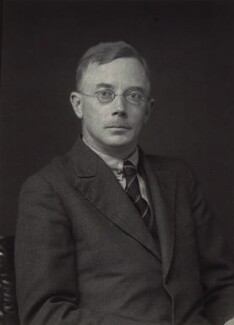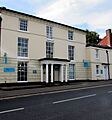Arthur John Allmand facts for kids
Quick facts for kids
Arthur John Allmand
|
|
|---|---|
 |
|
| Born | 7 January 1885 Wrexham, England
|
| Died | 4 August 1951 London, England
|
| Nationality | British |
| Alma mater | University of Liverpool |
| Spouse(s) | Mile Marguerite Marie S. Malicorne |
| Children | 3, including Christopher Allmand and Michael Allmand VC |
| Awards | 1851 Research Fellowship Fellow of the Royal Society Fellow of the Royal Institute of Chemistry |
| Scientific career | |
| Fields | Photochemistry Electrochemistry |
| Institutions | University of Liverpool King's College London |
|
Arthur John Allmand
MC
|
|
|---|---|
| Allegiance | |
| Service/ |
|
| Years of service | 1915-1919 |
| Rank | Major |
| Unit | 5th Battalion Cheshire Regiment |
| Battles/wars | World War I Battle of the Somme |
| Awards | Military Cross |
Arthur John Allmand (born January 7, 1885 – died August 4, 1951) was a famous English chemist. He was a professor at King's College London. He also received special honors for his work and his faith. He was even a Major in the army during World War I.
Contents
Growing Up
Arthur John Allmand was born in 1885 in Wrexham, England. His father, Frank Allmand, was a flour miller. The family was not rich.
Arthur started school at a young age in Wrexham. Later, he moved to London to attend Alleyn's School, Dulwich on a scholarship. He returned to Wrexham in 1898 and went to Grove Park School.
Arthur decided he wanted to be a chemist. In 1901, he passed his university entrance exam. He scored very well, placing 9th in honors.
In 1902, Arthur went to University College Liverpool. He studied chemistry there. He received three scholarships to help pay for his studies. He graduated with top honors in Chemistry in 1905.
While at university, Arthur also learned other subjects. He learned Russian and some Celtic languages. He even impressed a literature professor with his writing skills.
Early Career in Science
After graduating, Arthur Allmand stayed at the University of Liverpool. He worked as a researcher. He helped design a new laboratory for physical chemistry. Here, he became very interested in electrochemistry. This is the study of how electricity and chemical reactions are connected.
He earned more degrees, an M.Sc. in 1906 and a D.Sc. in 1910.
In 1910, Arthur received a special award called the 1851 Research Fellowship. This award is given to promising young scientists. It allowed him to study in Germany. He worked with famous chemists like Fritz Haber and Robert Luther.
From 1912 to 1913, he was a research assistant in London. He then returned to the University of Liverpool. He worked there as a lecturer until 1919.
Military Service
Arthur Allmand was in Germany when World War I started in 1914. He had to escape the country through Poland, Russia, and Sweden.
After returning home, he decided to join the British Army. In January 1915, he became an officer in the Cheshire Regiment. He joined his battalion near Ypres and later fought in the Battle of the Somme.
Because of his chemistry knowledge, Arthur was given a special role. He became a Chemical Adviser to the army. This was important because chemical warfare was used during the war. He helped the army understand and deal with chemical attacks.
By 1919, he was a Major and was awarded the Military Cross. This award is given for bravery in battle.
Later Career and Achievements
After the war, Arthur Allmand became a Professor of Chemistry. He worked at King's College London from 1919 until he retired in 1950. He also served as the Dean of the faculty.
During this time, he became very interested in photochemistry. This is the study of how light affects chemical reactions. His work in this area helped him explore how chemical reactions happen.
Arthur Allmand was a respected scientist. He was a Vice-President of the Chemical Society. He also led the Faraday Society for a year. In 1929, he was elected a Fellow of the Royal Society. This is a very high honor for scientists.
His Catholic Faith
A big change in Arthur Allmand's life was when he became a Roman Catholic. He was a very religious man. He believed his duty was to serve his country, university, and students. He felt this was all for the greater glory of God.
In 1950, Pope Pius XII honored him. Arthur was made a Knight of the Order of Saint Gregory. This shows how much his faith meant to him.
Family Life
Arthur Allmand married Marguerite Marie Suzannie Malicorne in 1920. She was French, so their home was bilingual. They spoke both French and English. They had three children:
- Marguerite Allmand (1921-2009) studied languages. During World War II, she worked as a code breaker at Bletchley Park.
- Captain Michael Allmand VC (1923-1944) was a soldier. He was awarded the Victoria Cross, the highest award for bravery. He received it for his actions in 1944, where he was sadly wounded and later died.
- Christopher Allmand (1936-2022) became a history professor. He taught at the University of Liverpool. He was an expert on the Hundred Years' War between England and France.
The Allmand family lived at No 5 North Square in Hampstead Garden Suburb.
Passing Away
Major Arthur John Allmand died on August 4, 1951. His funeral was held at St Edward the Confessor Church in Golders Green.
A friend and colleague, Sir Ernest Barker, wrote about Arthur. He said Arthur was a "rare spirit, saint as well as chemist." He added that Arthur's memory was a "blessing."
Images for kids




